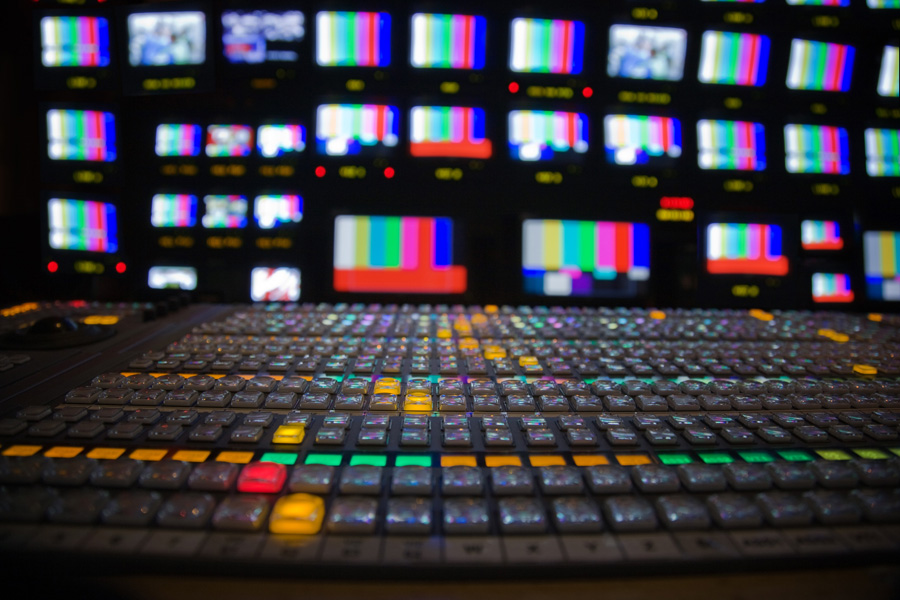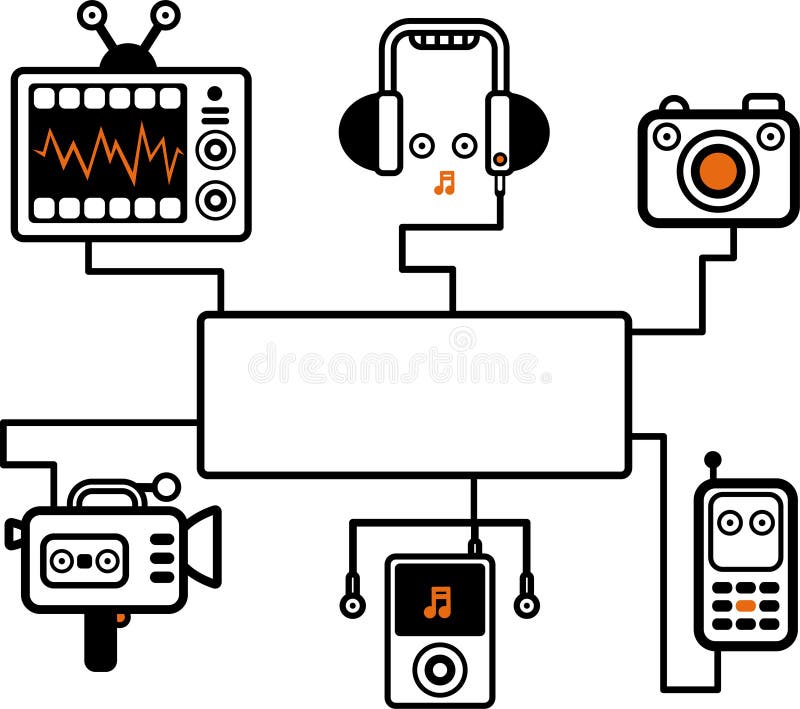How audio visual charlotte nc supports marketing messages
Wiki Article
Recognizing the Addition of Audio Visual Technology in Today's Educational Environments
The assimilation of audio-visual technology in educational setups has transformed the mentor and discovering process. Educators currently have accessibility to tools that cater to numerous learning designs, improving student involvement and cooperation. Nonetheless, the incorporation of these modern technologies presents both opportunities and obstacles. Recognizing just how to successfully implement these tools is important. What methods can instructors utilize to take full advantage of the advantages of audio-visual innovation in their classrooms?The Advancement of Audio-Visual Modern Technology in Education
As academic requirements advanced over the years, audio-visual modern technology undertook substantial improvements that reshaped the knowing setting. Tools such as film projectors and slide shows were the primary means of integrating visual aspects right into class. These very early modern technologies provided educators with the ability to present information dynamically, yet they were limited in ease of access and interactivity.With the development of videotape recorder in the 1970s, class began to incorporate taped lessons, broadening the scope of educational resources. The introduction of computers in the 1980s more transformed this landscape, permitting the development of multimedia presentations and interactive knowing experiences.
The rise of the web in the 1990s noted a zero hour, making it possible for real-time access to a riches of audio-visual materials. Today, digital devices such as interactive white boards and online discovering platforms continue to enhance the instructional experience, cultivating interaction and partnership amongst learners.
Benefits of Audio-Visual Devices for Diverse Understanding Styles
Audio-visual devices play an essential role in accommodating diverse learning designs by improving visual understanding and improving acoustic interaction. By incorporating photos, videos, and sound, these modern technologies create a more comprehensive educational setting. This diverse approach enables teachers to deal with the varied choices and needs of trainees effectively.Enhancing Visual Understanding
Interaction in the discovering process is noticeably enhanced via the usage of audio-visual tools, catering to various discovering designs. These tools, such as video clips, infographics, and interactive presentations, supply aesthetic stimulations that aid comprehension and retention. Aesthetic learners, specifically, take advantage of the unification of photos and animations, which can streamline intricate concepts and improve understanding. In addition, audio-visual resources can illustrate real-world applications, making finding out more appropriate and interesting. By incorporating color, activity, and audio, educators can produce a vibrant learning atmosphere that catches students' attention and cultivates much deeper cognitive connections. Ultimately, the tactical use audio-visual modern technology not just sustains visual learning but also improves the total educational experience for diverse learners.Improving Auditory Engagement
A significant advantage of integrating audio-visual tools in education and learning is their capacity to boost acoustic involvement amongst trainees. These tools, which include multimedia discussions, podcasts, and interactive audio aspects, satisfy different discovering designs, specifically profiting acoustic learners (audio visual charlotte nc). By integrating sound and narration, teachers can produce immersive experiences that catch trainees' interest and strengthen comprehension. This engagement is crucial, as it cultivates a much deeper understanding of the product and promotes retention. Additionally, audio-visual tools can help with collective knowing atmospheres, encouraging students to take part in conversations and share their understandings. Eventually, the consolidation of audio-visual innovation not only sustains acoustic engagement but likewise enriches the total academic experience, making discovering much more vibrant and reliable for all traineesEnhancing Interaction Through Interactive Understanding

Gamification aspects, such as tests and simulations, can improve motivation and retention, making discovering extra pleasurable and reliable. These approaches not just boost cognitive engagement however additionally deal with diverse discovering styles, ensuring that all trainees can take part meaningfully. Because of this, interactive learning environments promote a sense of neighborhood and belonging, eventually bring about improved academic outcomes. With the combination of audio visual modern technology, instructors can transform conventional classrooms into lively spaces where trainees prosper and proactively form their instructional trips.
Linking Theory and Experiment Multimedia Resources
Multimedia sources act as an important web link in between academic ideas and functional application in academic settings. By improving interaction, assisting in collective discovering experiences, and sustaining varied learning designs, these devices develop a much more inclusive and dynamic learning environment - audio visual charlotte nc. This technique not only promotes much deeper understanding but likewise prepares trainees for real-world difficulties
Enhancing Involvement Via Multimedia
Interaction in academic setups greatly increases when teachers integrate multimedia resources right into their mentor strategies. Using video clips, podcasts, and interactive presentations enhances the finding out experience, enabling pupils to get in touch with the material on multiple degrees. Multimedia resources provide to various finding out styles, providing aesthetic, auditory, and kinesthetic stimulations that can hold trainees' focus a lot more efficiently than traditional lecture techniques. Furthermore, these sources can simplify intricate ideas, making them more obtainable and memorable. By integrating multimedia, instructors can produce a vibrant classroom setting that fosters inquisitiveness and motivates learners. Ultimately, the strategic use audio-visual innovation offers to link the gap between theoretical knowledge and sensible application, enhancing the academic experience for both teachers and pupils.Helping With Collaborative Knowing Knowledge
Countless studies show that joint understanding experiences markedly boost trainee outcomes when incorporated check this with multimedia sources. Multimedia tools help with interaction amongst pupils, permitting them to involve in analytical and vital believing collectively. By utilizing video conferencing, collective systems, and interactive discussions, teachers create atmospheres conducive to team effort and shared understanding. These modern technologies enable trainees to connect their concepts successfully and obtain prompt feedback, cultivating a much deeper understanding of the topic. In enhancement, multimedia resources can provide complex concepts in more absorbable styles, advertising discussion and collaboration. Consequently, the combination of joint discovering and audio-visual innovation not just enriches the instructional experience yet likewise prepares trainees for real-world teamwork dynamics, stressing the value of participation and cumulative knowledge construction.Sustaining Diverse Discovering Styles
While typical teaching methods commonly deal with a restricted series of learning choices, the integration of audio-visual technology offers a much more inclusive method to education and learning. By employing multimedia sources such as video clips, interactive simulations, and digital discussions, teachers can resolve numerous learning styles, including visual, acoustic, and kinesthetic. This flexibility permits for differentiated instruction, allowing pupils to engage with content in methods that reverberate with their private choices. Furthermore, audio-visual devices can assist in much deeper understanding by supplying numerous representations of intricate ideas. Consequently, pupils that might have a hard time with traditional methods can find alternate paths to success, fostering a more equitable understanding setting that sustains academic achievement for all students.Difficulties in Executing Audio-Visual Modern Technology
Although audio-visual technology holds wonderful promise for boosting educational experiences, its execution commonly runs into significant obstacles. One key issue is the economic problem linked with purchasing and preserving such devices, which can stress budget plans, particularly in underfunded organizations. Furthermore, inadequate training for teachers can hinder effective combination, leaving them ill-prepared to use the innovation totally. Technical problems, such as software malfunctions and compatibility problems, may additionally interrupt lessons and annoy both educators and trainees. Varying degrees of pupil accessibility to technology outside the class can create disparities in learning opportunities. The potential for over-reliance on innovation might take away from important training methods, ultimately restricting the instructional experience. Addressing these difficulties requires a thorough approach, consisting of ample funding, specialist development, and fair access to resources, to assure that audio-visual technology can be leveraged successfully in today's educational setups.Ideal Practices for Integrating Technology in the Class

Additionally, fostering an interactive setting via collaborative tools motivates pupil interaction and participation. Utilizing varied audio-visual sources satisfies different finding out styles, suiting aesthetic, auditory, and kinesthetic learners. Consistently reviewing the impact of technology on trainee discovering aids instructors refine their methods and adapt to transforming requirements. Lastly, including trainees in the choice of technology advertises possession and official source motivation. By sticking to these finest practices, instructors can produce a vibrant classroom ambience that properly integrates innovation and improves the instructional experience for all trainees.
The Future of Audio-Visual Technology in Education And Learning
As class increasingly embrace technology, the landscape of audio-visual tools in education and learning continues to advance (audio visual charlotte nc). Future advancements are anticipated to concentrate on greater interactivity and personalization, permitting instructors to tailor finding out experiences to specific student needs. Technologies such as enhanced fact (AR) and online reality (VIRTUAL REALITY) will likely offer immersive knowing environments, enhancing trainee involvement and understanding
Man-made knowledge (AI) is positioned to play a significant function in audio-visual technology by offering real-time responses and flexible discovering paths. This assimilation might help educators determine and attend to trainee obstacles more efficiently. Cloud-based platforms will help with simpler access to sources and collaboration amongst pupils and educators, no matter location.
Along with these technological advancements, specialist advancement for educators will be click for more info vital, guaranteeing they are geared up to make use of these devices efficiently. Overall, the future of audio-visual innovation in education and learning promises to develop even more vibrant, inclusive, and impactful discovering experiences.
Frequently Asked Questions
Exactly How Can Educators Select the Right Audio-Visual Tools for Their Class?
Picking suitable audio-visual tools needs educators to examine their educational goals, think about pupil demands, review readily available innovation, and seek suggestions from peers or specialists, making certain devices properly enhance learning and interaction within their certain classroom atmosphere.What Spending plan Factors to consider Are There for Implementing Audio-Visual Modern Technology?
Budget considerations for executing audio-visual technology consist of first purchase costs, upkeep expenses, training for team, and potential software application licensing charges. Furthermore, long-lasting financial investment in updates and replacements must also be factored into economic preparation.Exist Particular Training Resources for Educators on Audio-Visual Equipment?
Numerous institutions offer training sources for instructors on audio-visual devices, consisting of online training courses, workshops, and instructional guides. These sources aim to improve educators' skills and self-confidence in properly integrating innovation into their mentor practices.How Do We Measure the Performance of Audio-Visual Innovation in Knowing?
Gauging the efficiency of audio-visual modern technology in discovering involves evaluating pupil engagement, understanding, retention rates, and total academic performance. Studies, analyses, and observational research studies can provide important understandings into its effect on instructional end results.What Prevail Misunderstandings Concerning Audio-Visual Technology in Education And Learning?
Usual misunderstandings regarding audio-visual innovation in education and learning consist of the belief that it ensures interaction and finding out end results, as well as the assumption that all trainees profit equally, overlooking specific knowing choices and needs.Report this wiki page